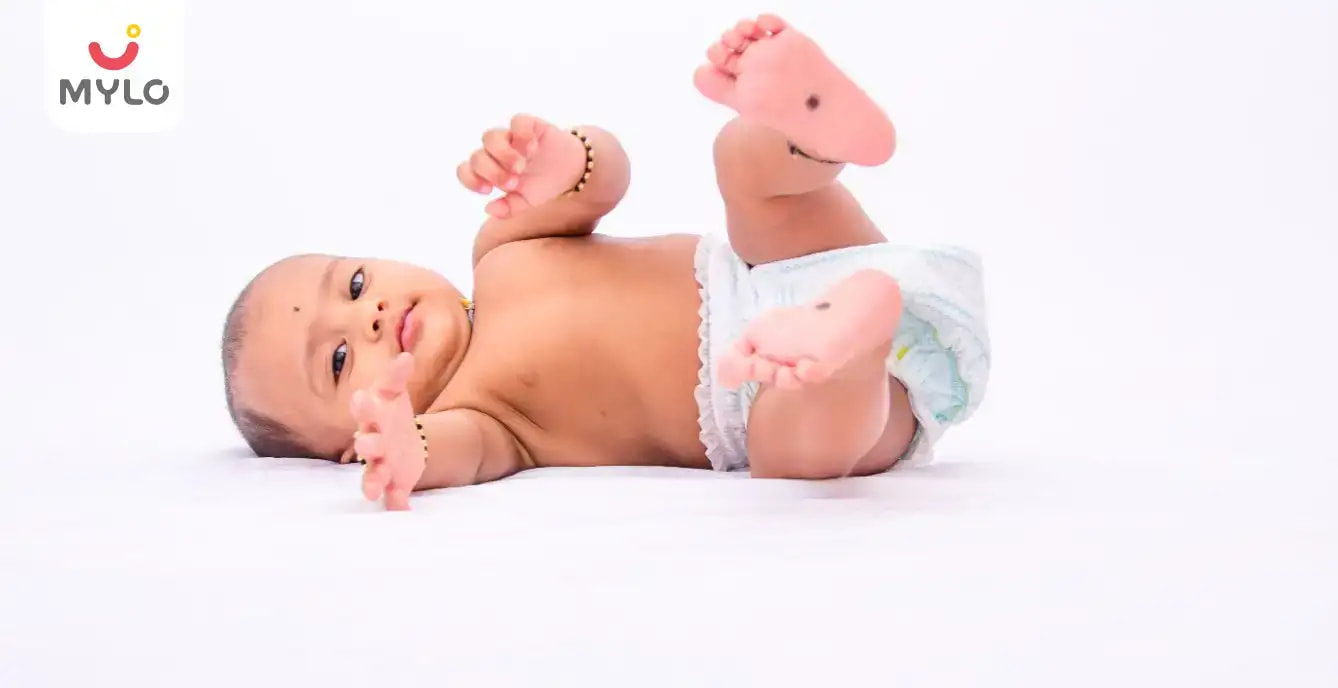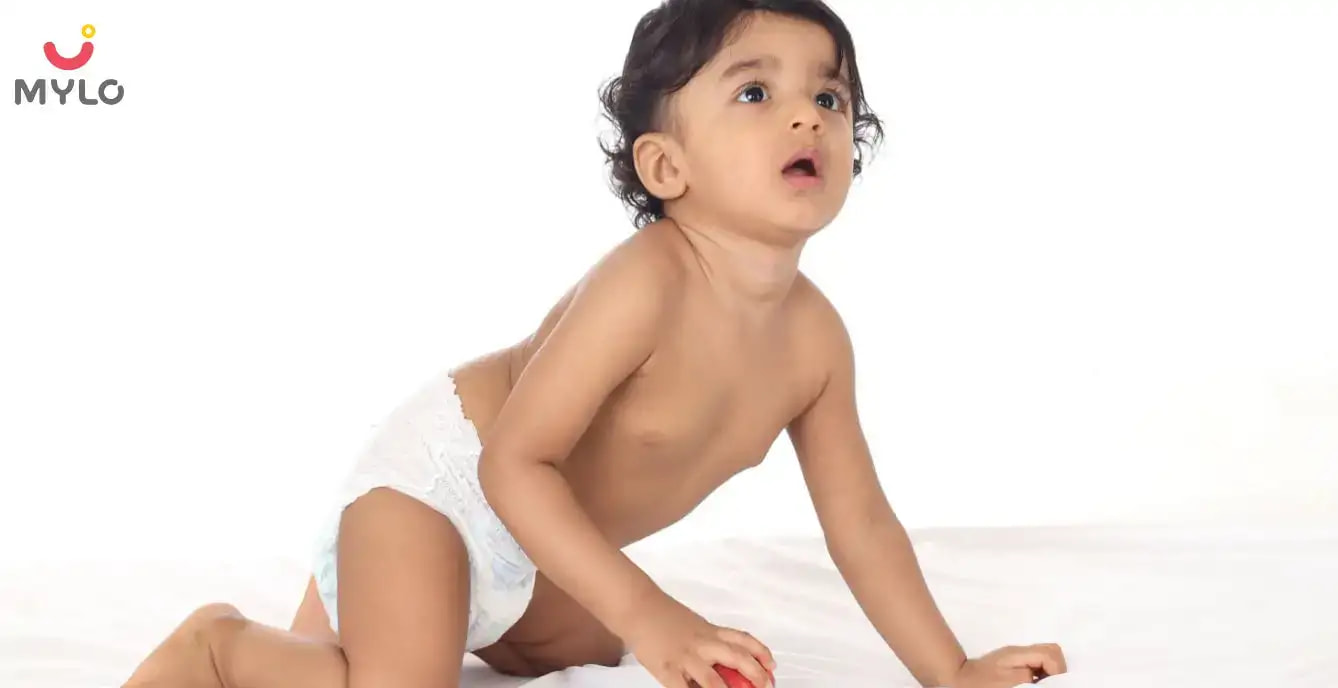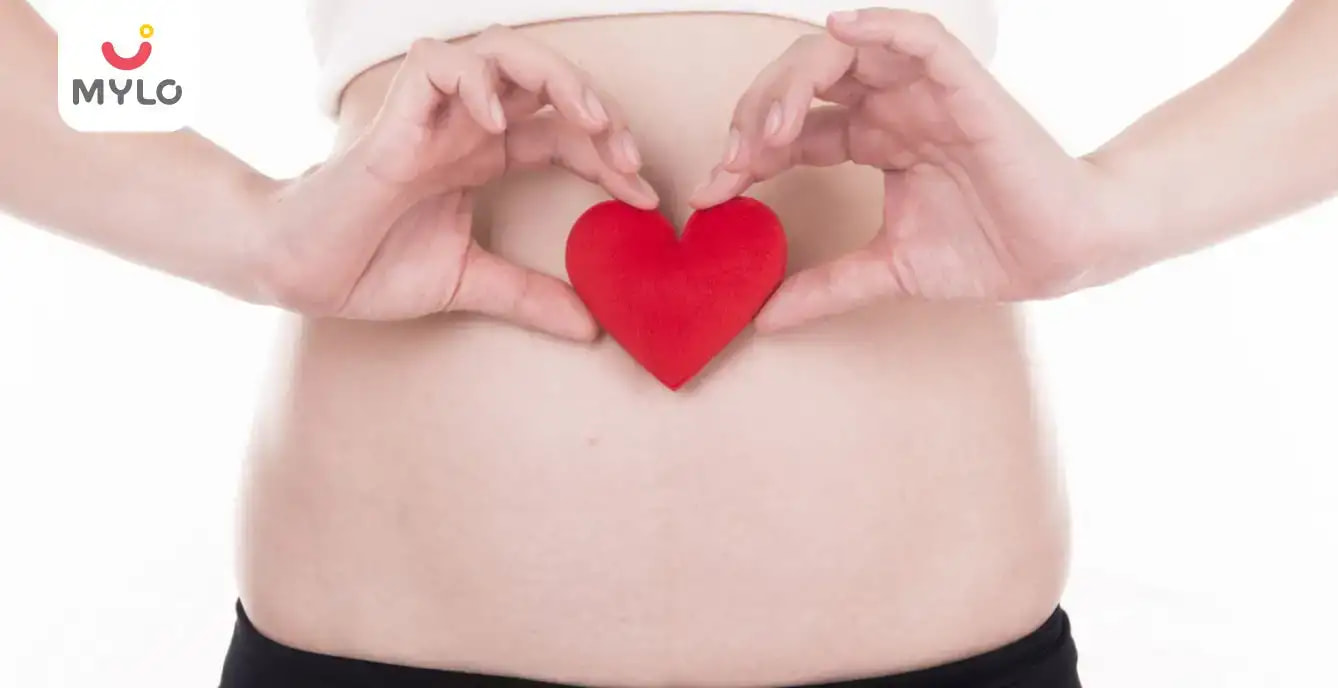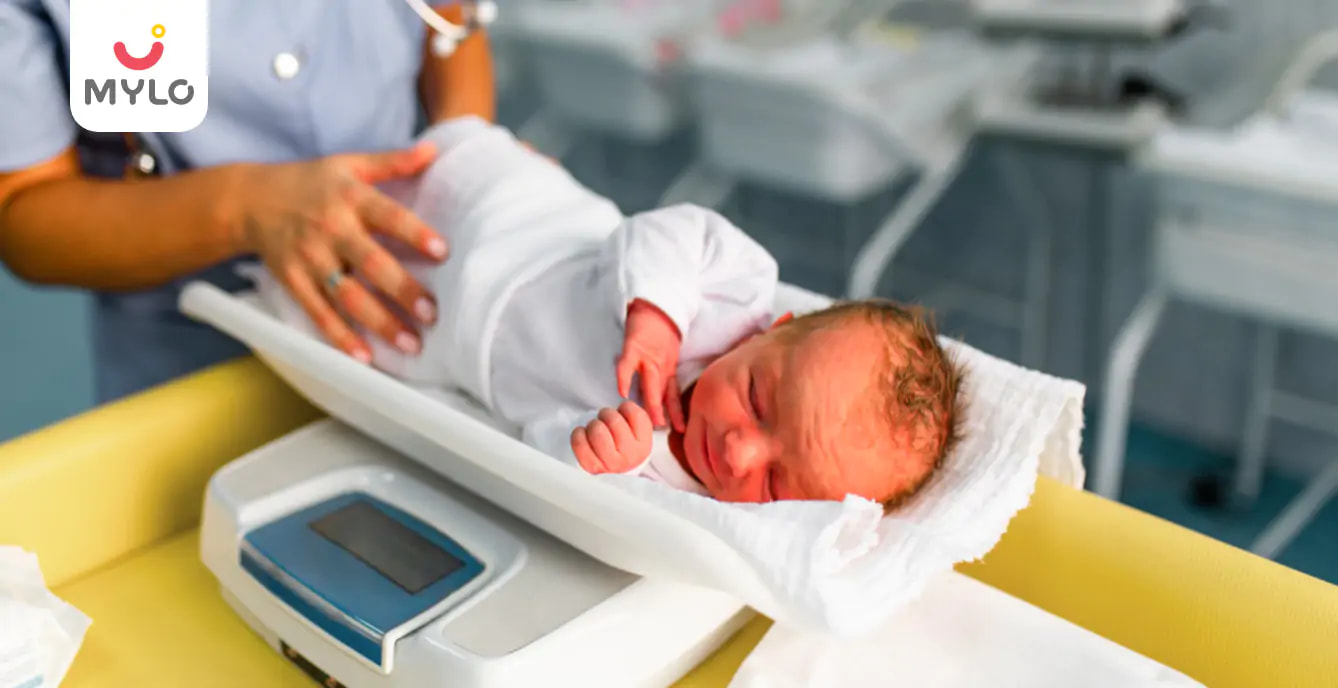Home

Milestones

Baby Milestones: A Week-By-Week Guide to Your Baby’s Development in the First Year
In this Article

Milestones
Baby Milestones: A Week-By-Week Guide to Your Baby’s Development in the First Year
Updated on 3 November 2023
The fun part about becoming new parents is witnessing the development and baby milestones achieved in the first year of birth. And while every baby is unique and may grow at their own pace, this can act as a week-by-week guide to anticipate certain developments and keep track of your baby's overall growth.
Baby Milestones by Month
The most exciting part about raising a child is observing how they grow and rapidly develop week after week. Here is an interesting breakup of these milestones, described in detail in the following section.
Newborn Baby Milestones:
Week 1
This is when babies learn to recognise the voice of their caregivers, laying the foundation for language development.
Week 2
Babies start to focus on objects at a short distance.
Week 3
Although random, babies learn to snuggle.
Week 4
The first big one of baby milestones is when they learn to make "coo" and "aah" sounds.
You may like: 10 Useful Baby Care Tips for New Parents
1 Month Baby Milestones:
Week 5
Babies' movements become smoother and less random.
Week 6
Babies start to use their facial muscles to flash a voluntary smile or grin.
Week 7
Babies start connecting sounds to their senses.
Week 8
With the neck muscles firming up, babies can hold their heads at an angle of up to 45 degrees.
2nd Month Baby Milestones:
Week 9
Babies are more curious and responsive to sounds like high-pitched tones.
Week 10
Babies learn to recognise familiar faces in a crowd.
Week 11
Babies seem more curious to learn about new things.
Week 12
At this stage, babies usually start understanding the function of their hands.
3rd Month Baby Milestones:
Week 13
This week's most significant baby milestones are laughing, babbling, and chuckling.
Week 14
Hand and eye coordination start to be demonstrated.
Week 15
Babies learn to roll over during this time.
Week 16
The neck, rib cage, and stomach muscles start becoming stronger.
4th Month Baby Milestones:
Week 17
Babies become more vocal, producing varied sounds.
Week 18
Babies may start enjoying alone time.
Week 19
Babies can be taught to associate sounds with pictures.
Week 20
Babies start discovering themselves and may even smile at their reflection in the mirror.
5th Month Baby Milestones:
Week 21
Babies start crawling by this time.
Week 22
This phase may be a little scary as babies start putting everything in their mouths.
Week 23
Babies usually develop more muscle strength in their upper bodies by now.
Week 24
Muscle development continues.
6th Month Baby Milestones:
Week 25
Gross motor skills, like walking and crawling, start developing.
Week 26
Separation anxiety might set in here as babies can strongly associate with their caregivers.
Week 27
Babies learn to establish cause-and-effect relations.
Week 28
Babies can clap or use their hands in a more advanced way.
7th Month Baby Milestones:
Week 29
Babies yearn to socialise at this stage as they express a willingness to mingle.
Week 30
Muscular strength and coordination continue to develop.
Week 31
The use of the hand is at a much-advanced stage now when babies learn to clasp.
Week 32
Babies may learn to lean against things without the support of hands.
8th Month Baby Milestones:
Week 33
Babies start expressing their likes and dislikes in their own ways.
Week 34
The strength and coordination of the legs become more evolved.
Week 35
Some babies might start comprehending simple words like ball or bottle.
Week 36
Babies can now start creating memories from experiences.
9th Month Baby Milestones:
Week 37
Both mobility and curiosity are at an all-time high at this stage.
Week 38
Babies may become mischievous by reaching out for new objects or banging them.
Week 39
Babies at this stage usually spend time gumming or banging small objects.
Week 40
Babies learn to observe and copy.
10th Month Baby Milestones:
Week 41
The concept of self-esteem slowly creeps into the baby's minds as they become more conscious of themselves.
Week 42
This is a crucial phase for cognitive development that continues to build.
Week 43
The concept of object permanence can now be introduced to babies.
Week 44
Babies are curious to explore new and sometimes dangerous things like stairs.
11th Month Baby Milestones:
Week 45
Babies might try to feed themselves by now.
Week 46
The babies' personalities start taking shape at this stage.
Week 47
Curiosity, exploration, and opinions continue to grow.
Week 48
Babies are just about to step into the phase of walking with support.
12th Month Baby Milestones:
Week 49
Anxiety around strangers may start creeping back.
Week 50
Babies' energies are boundless as they keep discovering the world around them.
Week 51
Babies get their first lessons in knowing one's limits.
Week 52
By this time, most babies would start calling people by their designated names, like Ma or Dada.
While this guide can provide new parents with directions, the joy of observing baby milestones can only be felt.
References
Dosman CF, Andrews D, Goulden KJ. (2012). Evidence-based milestone ages as a framework for developmental surveillance. www.ncbi.nlm.nih.gov



Written by
Priyanka Verma
Priyanka is an experienced editor & content writer with great attention to detail. Mother to an 11-year-old, she's a ski
Read MoreGet baby's diet chart, and growth tips

Related Articles
RECENTLY PUBLISHED ARTICLES
our most recent articles

Diet & Nutrition
গর্ভাবস্থায় আলুবোখরা: উপকারিতা ও ঝুঁকি | Prunes During Pregnancy: Benefits & Risks in Bengali

Diet & Nutrition
গর্ভাবস্থায় হিং | ঝুঁকি, সুবিধা এবং অন্যান্য চিকিৎসা | Hing During Pregnancy | Risks, Benefits & Other Treatments in Bengali

Women Specific Issues
স্তনের উপর সাদা দাগ: লক্ষণ, কারণ এবং চিকিৎসা | White Spots on Nipple: Causes, Symptoms, and Treatments in Bengali

Diet & Nutrition
গর্ভাবস্থায় পোহা: উপকারিতা, ধরণ এবং রেসিপি | Poha During Pregnancy: Benefits, Types & Recipes in Bengali

Diet & Nutrition
গর্ভাবস্থায় মাছ: উপকারিতা এবং ঝুঁকি | Fish In Pregnancy: Benefits and Risks in Bengali

Diet & Nutrition
গর্ভাবস্থায় রেড ওয়াইন: পার্শ্ব প্রতিক্রিয়া এবং নির্দেশিকা | Red Wine During Pregnancy: Side Effects & Guidelines in Bengali
- ইনার থাই চ্যাফিং: কারণ, উপসর্গ এবং চিকিৎসা | Inner Thigh Chafing: Causes, Symptoms & Treatment in Bengali
- গর্ভাবস্থায় ব্রাউন রাইস: উপকারিতা ও সতর্কতা | Brown Rice During Pregnancy: Benefits & Precautions in Bengali
- Velamentous Cord Insertion - Precautions, Results & Safety
- Unlock the Secret to Flawless Skin: 7 Must-Have Qualities in a Face Serum
- Unlock the Secret to Radiant Skin: How Vitamin C Serum Can Transform Your Complexion
- Gender No Bar: 10 Reasons Why Everyone Needs a Body Lotion
- Unlock the Secret to Radiant Skin How to Choose the Perfect Body Lotion for Your Skin Type
- Top 10 Reasons to Apply a Body Lotion After Every Bath
- Communication in Toddlers: Milestones & Activities
- How to Improve Vocabulary for Toddlers?
- A Comprehensive Guide to Understanding Placenta Accreta
- Vulvovaginitis in Toddlers Causes, Symptoms and Treatment
- A Comprehensive Guide to Understanding Cerebral Palsy in Children
- Bitter Taste in Mouth During Pregnancy: Understanding the Causes and Remedies


AWARDS AND RECOGNITION

Mylo wins Forbes D2C Disruptor award

Mylo wins The Economic Times Promising Brands 2022
AS SEEN IN
















- Mylo Care: Effective and science-backed personal care and wellness solutions for a joyful you.
- Mylo Baby: Science-backed, gentle and effective personal care & hygiene range for your little one.
- Mylo Community: Trusted and empathetic community of 10mn+ parents and experts.
Product Categories
baby carrier | baby soap | baby wipes | stretch marks cream | baby cream | baby shampoo | baby massage oil | baby hair oil | stretch marks oil | baby body wash | baby powder | baby lotion | diaper rash cream | newborn diapers | teether | baby kajal | baby diapers | cloth diapers |








